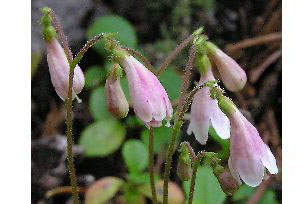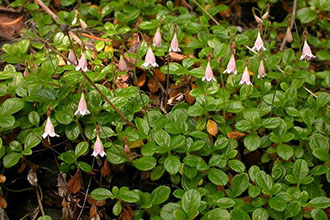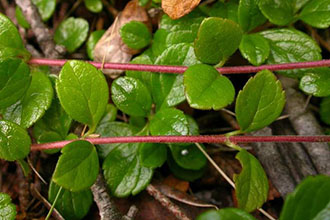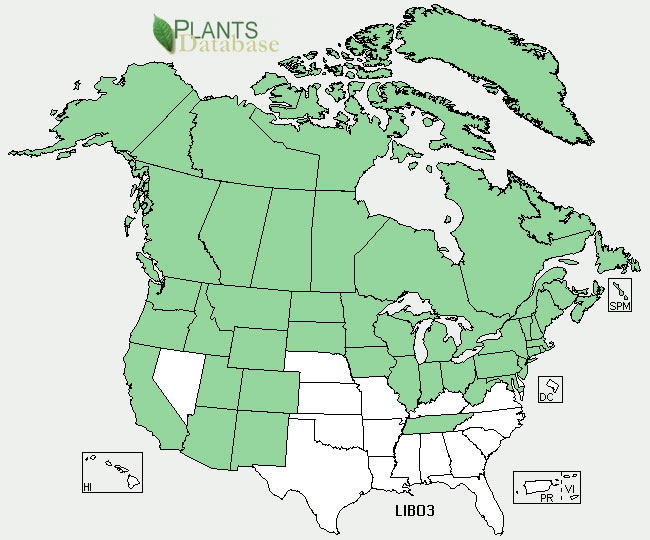Taxonomy: Kingdom - Plantae (plants). Subkingdom - Tracheobionta (vascular plants). Superdivision - Spermatophyta (seed plants). Division - Magnoliophyta (flowering plants). Class - Magnoliopsida (dicotyledons). Subclass - Asteridae. Order - Dipsacales. Family - Caprifoliaceae (honeysuckle). Genus - Linnaea L. (twinflower). Species - Linnaea borealis L. (twinflower).
Ecology: Twinflower is a native, evergreen, dwarf shrub. It is creeping or trailing in growth form, with numerous short aerial stems rising from the stolon. With time, stolons may become shallowly buried beneath litter and duff layers; maximum depth of twinflower stolons in a mixed conifer old-growth forest of central Oregon was 0.27 cm below the soil surface. Aerial stems become woody with age but rarely exceed 0.30 cm in diameter. The root crown of these stems is positioned at or just beneath the duff or soil surface. Twinflower has a shallow, fibrous network of roots with their growing points within and slightly below the duff layer. Twinflower is found in recently disturbed, seral, and climax plant communities. Twinflower tolerates a wide spectrum of light intensity. It grows in full daylight in alpine meadows and peat bogs, but subcanopy light has been measured at 2 percent of full daylight in a closed-canopy mountain hemlock-western redcedar.



